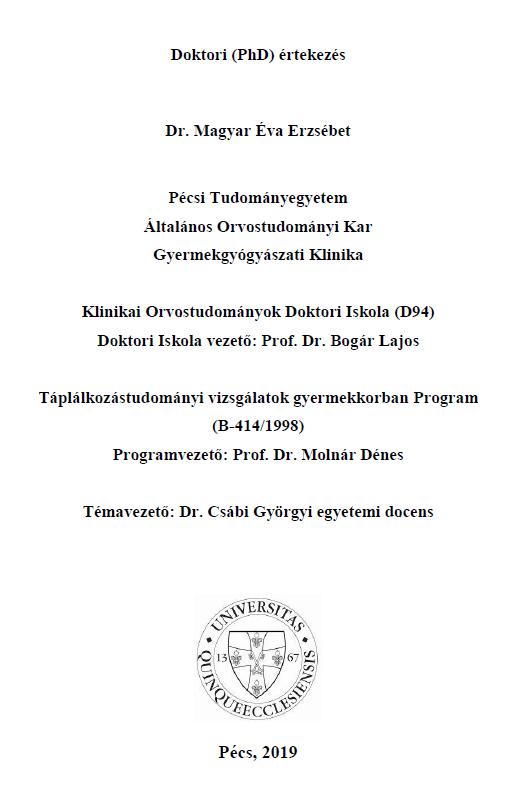Az ételaddikció vizsgálata gyermekkorban
Abstract
The theory of food addiction was suggested as early as 1956 (Randolph et al., 1956), but this concept has become more of a focus of addiction research due to the global pandemic. A growing body of evidence supports the hypothesis that specific types of foods (especially processed foods with high sugar and fat levels) may carry an addictive potential, similar to classic addictive substances (Avena et al., 2011). Meule and Gearhardt pointed out that the diagnostic criteria for substance use disorders can be determined in patients under treatment with obesity (Meule & Gearhardt, 2004). Behavioral patterns, such as the tendency to lose control over consumption of highly palatable foods, suffering from repeated failed attempts to reduce or to completely stop the consumption of these products, despite the negative physical and/or social consequences has been described (Gearhardt, Corbin & Brownell, 2009). However, the empirical assessment of two crucial criteria for addiction, tolerance and withdrawal, on human sample is problematic, several animal experiments imply that tolerance and withdrawal symptoms can be induced by repeated sugar intake (Avena, Rada, & Hoebel, 2008). Schulte et al. pointed out that the danger of food addiction lies within these products’ widespread availability (they are usually rather cheap and legal to be purchased) – similar to cigarettes regarding nicotine addiction (Schulte et al., 2015). As the overconsumption of the aforementioned products causes not only serious somatic problems but also predisposes to other forms of addiction, the development of a reliable, objective tool with adequate psychometric properties, has become necessary to assess the presence and severity of food addiction. In 2009 Gearhardt et al. (Gearhardt et al., 2009) developed the Yale Food Addiction Scale (YFAS), thus enabling the identification of people presenting with food addiction symptoms. The YFAS applies the same diagnostic criteria used to diagnose substance use disorders to the conception of highly palatable foods (e.g., chocolate, pizza). The German, French, Italian and Chinese versions of the scale have been already developed and used for food addiction assessment (Meule et al., 2012; Brunault et al., 2014; Innamorati et al., 2015; Chen et al., 2015). Yale Food Addiction Scale for Children (YFAS-C) has been validated for the child population in 2013, also showing good psychometric properties (Gearhardt et al., 2013).

